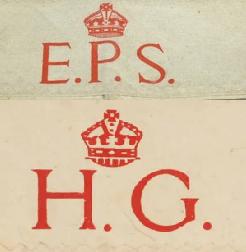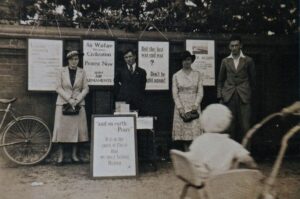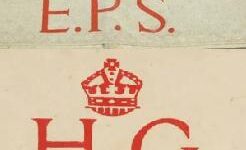1941: Blackout
November 8, 2024
By AHNZ
 Until 1941 the first year or so of WW2 didn’t need to be a problem for a New Zealander. Up until mid-1940 there had even been a huge Centennial Exhibition to attend in Wellington for 6 months during which 2.6 million visitors ate fancy food and played games. Before that the German Ambassador himself was a welcome guest and our political executives toured Germany trying to turn friendship into a trade deal. There was no cause to fear the Japanese until the strike on Pearl Harbor (7 December, 1941) and the Fall of Singapore (15 February, 1942.)
Until 1941 the first year or so of WW2 didn’t need to be a problem for a New Zealander. Up until mid-1940 there had even been a huge Centennial Exhibition to attend in Wellington for 6 months during which 2.6 million visitors ate fancy food and played games. Before that the German Ambassador himself was a welcome guest and our political executives toured Germany trying to turn friendship into a trade deal. There was no cause to fear the Japanese until the strike on Pearl Harbor (7 December, 1941) and the Fall of Singapore (15 February, 1942.)
Prime Minister Joe Savage had said “‘Where she goes, we go. Where she stands, we stand” in September 1939 but only in 1941 did The War impose itself on everyday Kiwis.
From March 1941 thousands of American marines encamped although there was no national debate about it and a media embargo. Our own Expeditionary Force was deployed to Greece and Crete and making a poor job of it. Ref. 1941: Operation Mercury, AHNZ
Still, a New Zealander at home might get on with normal life up to this imposing year of 1941. Your gun, if you had one, was declared government property in March that year. Our Government essentially attacked Finland in June by stealing the Pamir. A huge manhunt with all the bells and whistles was sent to Westland to kill Stanley Graham in October. Also in October, the Government cancelled the general election that was due and until the end of 1943 we had none.
Intrusive conscription, even of civilian “manpower,” would come in 1942. Yet even well into 1941 Acting Prime Minister Walter Nash presented the view that not 5% of New Zealanders “understood the seriousness of the war situation.”¹ To put it another way, New Zealanders did not share the same understanding as their government.
The Blackout, or, Lighting Restrictions Emergency Regulations, was a 1941 measure that brought WW2 into people’s homes. If they were not going to naturally and spontaneously take an interest in the war then they would have to be forced to do so.
Canterbury and Westland were to lead the way in Blackout trials from February 1941. Christchurch wasn’t to have its first total Blackout attempt until December. Wellington’s first Blackout trial came on 7 November when the Mayor warned citizens to obey Wardens and EPS (Emergency Precaution Scheme) workers who now had command of people’s light. “It is now the duty of citizens to see that all that effort is not wasted by their own indifference or lack of initiative in preparing suitably their homes and other premises,” said Mayor Thomas Hislop.²
So now a citizen, especially in the towns, had to participate in the war like it or not. They had to change their habits, change their homes, change their lived environment to that of a siege mentality. The signals sent to the central nervous system of everyone in the home is that they are in danger, they must strangle the light, they must hide, they must go under-cover. If they didn’t do it then The State would come to their front door and prosecute. If they were not obeying, no matter how crazy or ridiculous, then they were putting their neighbors in danger. They were not being part of the Team of 1.6 million. Some paranoid neighbors probably had conniptions that their house was about to be bombed by the Japanese Empire because the family next door left their bathroom light switched on.
This organised hysteria was especially hard on the over-protected children who were now cast in the mold of Silent Generation who “…grew up as the suffocated children of war and depression…became the risk-averse technicians and professionals as well as the sensitive rock ‘n’ rollers and civil rights advocates of a post-Crisis era in which conformity seemed to be a sure ticket to success.” – The Fourth Turning by Neil Howe and William Strauss (2000)
Not only children and men were marked by the artificially stoked paranoia. The Blackouts and all they represent also had a part to play in the massive exodus of New Zealand’s stock of fertile young women. In a time of fear women look toward warriors for protection. Apart from ours being away from home and Americans being here, the USA was also the great cultural and martial superpower; The place for women seeking security to run to for protective arms. Some 1,500 of our best girls quit New Zealand according to NZHistory.govt. In 1943 the visiting First Lady more or less endorsed this egg-napping. Ref. 1943: Eleanor Roosevelt Aggravates Unrest, AHNZ
 According to one of our family stories grandpa had the role of enforcing the blackout in Westland. One evening he set out with his wooden gun to look for offending house light and had to go in to talk to the owner. The occupant, a woman, was in such an anxious state about the situation that she locked all the doors and wouldn’t let him leave! She wanted a man in the house, hostage or not, for protection. I imagine he stayed to help her co-regulate her emotions before continuing the patrol. He ought to have. The state of fear was partly his fault for being one of the collaborators.
According to one of our family stories grandpa had the role of enforcing the blackout in Westland. One evening he set out with his wooden gun to look for offending house light and had to go in to talk to the owner. The occupant, a woman, was in such an anxious state about the situation that she locked all the doors and wouldn’t let him leave! She wanted a man in the house, hostage or not, for protection. I imagine he stayed to help her co-regulate her emotions before continuing the patrol. He ought to have. The state of fear was partly his fault for being one of the collaborators.
How much Blackouts were resisted is hard to know since, after all, there was no free press. Especially not about something like this.
Because of the lack of lighting, there were accidents. Cars and bikes running people over. These too are probably under-reported. In an early Christchurch test there were 185 breaches and some shops had to pay the price for being reported by the travelling goons with arm-bands. In March 18 Canterbury businesses facing prosecution and 81 houses threatened with disconnection of their lighting. RZNAF aerial patrols as well as snitches on the streets were watching you, your car headlights, your shop, and your home trying to find fault. As I said, organised paranoia. Those who failed to comply were breaking the Emergency Regulations Act. Ref. Wartime Blackouts, canterburystories.nz
In my opinion the Blackout was never a practical measure and never carried out competently. Nor is there a good case for why Japanese would or could want to spend perfectly good bombs going after New Zealand towns. The Government wanted the War and the unchecked power it would give them but needed to get the public to go along with it. Propaganda was one thing but best of all is to make people go through some rituals and perfunctory motions. To punish and shame those who do not conform. New Zealand was thus converted from a more free and liberal spirit into a conformist and Orwellian society from which it would not soon recover.
–
Image ref. Connie Summers (left) and others protesting the War in Christchurch, 1938. The Liz Gunn of her day? Ref. Gwilym Summers, Remembering Christchurch, Facebook (2023)
1 The Home Front Volume II, Nancy Taylor (1986)
2 In Their Own Words, Barnett (1988)
 Like Comment Share
Like Comment Share





